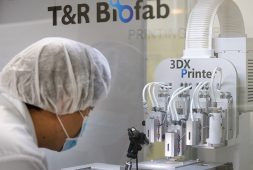
According to a recent study published in the Journal of Biophotonics on February 20, exposing a person’s back to a specific wavelength of red light for 15 minutes can lead to a significant reduction in blood sugar levels following meals.
The researchers discovered that red light therapy provided dual benefits for blood sugar management: it not only lowered overall blood glucose levels but also mitigated the peak levels reached after a glucose tolerance test, which stimulates the body’s response to a meal.
Although the study focused on individuals without diabetes, lead author Michael Powner, PhD, a senior lecturer in neurobiology at the City University of London’s school of health and psychological sciences, suggests that this treatment, which requires no injections or pills, holds promise for post-meal blood sugar control in diabetes management.
“This is important, as very high blood glucose levels have the potential to damage tissues around our body,” says Dr. Powner. These fluctuations in blood sugar spikes also contribute to aging, he adds.
The Therapeutic Potential of Red Light Has Been Investigated in Cancer, Depression and Various Other Diseases
The red light therapy examined in the study falls under the category of photobiomodulation (PBM), employing light to prompt living organisms to initiate self-healing processes.
PBM has been scrutinized in a diverse array of ailments, encompassing cancer, macular degeneration, depression, wound healing, various skin conditions, and many aspects of dental care.
To probe the efforts of 670 nanometers (nm) of red light on blood sugar levels, researchers enlisted 30 healthy participants devoid of medication usage and metabolic disorders, such as diabetes. These individuals were randomly divided into two groups, each comprising 15 participants.
At the study’s outset, both groups underwent a fasting oral glucose test to establish baseline measurements. Participants abstained from consuming anything but water for at least 10 hours before ingesting a syrupy 5-ounce beverage containing 75 grams (g) of sugar on an empty stomach. Subsequently, they monitored their blood sugar levels every 15 minutes over a two-hour period.
Within a week, another round of blood glucose testing was conducted, with one group receiving a 15-minute exposure to 670 nm red light on the exposed skin of their upper back. Meanwhile, participants in the placebo group assumed identical positions for 15 minutes, albeit without the activation of the red light.
Red Light Group Experienced 12 Percent Decreased in Peak Blood Sugar Levels Compared to Placebo Group
The results showed a notable difference between the two groups. Participants subjected to red light therapy showcased a nearly 28 percent reduction in blood glucose levels following sugar intake compared to baseline measurements.
Furthermore, the therapy resulted in a reduction of maximum glucose spiking by 7.5 percent. In comparison to the placebo group, those exposed to red light exhibited a 12 percent decrease in peak blood sugar levels.
An associate professor of medicine and an endocrinologist at Stanford Health Care in California, Marilyn Tan, MD, who was not involved in the study, said, “This study showed that in healthy participants without diabetes, short-term photobiomodulation lowered the peak glucose level after an oral glucose tolerance test.”
Dr. Tan adds, that the findings suggest that red light therapy for people without diabetes improves glucose tolerance — but it isn’t clear what it would mean for people with diabetes, or what the long-term impacts might be.
Enhancing Blood Sugar Control with Red Light Therapy
Previous studies have shown that long-wavelength light ranging from approximately 650 to 900 nm, spanning from visible to near-infrared wavelengths, can boost the production of adenosine triphosphate (ATP) in mitochondria. ATP is a nucleotide that provides energy for essential cellular functions.
Researchers speculate that the increased ATP production may trigger signaling changes throughout the body, leading to improvements via the “abscopal effect” – wherein a treatment applied to one part of the body induces cellular changes in another area, as explained by Dr. Powner.
“We have chemical messages being sent around in our blood. Previous studies have reported changes to these chemical messages following red light exposure, which could be initiating the change in how glucose is used around the whole body after red light exposure,” he says.
Is Red Light Therapy Effective for Treating Diabetes and Reducing Dependency on Insulin and Medications?
“If the positive effects of red light on glucose levels are validated in larger studies, in people with prediabetes or diabetes, our findings suggest that using red light before meals for a few minutes would likely help reduce the subsequent increase in blood glucose,” says Dr. Powner.
Dr. Tan emphasizes the need for further research to build upon these findings. “This study involved 30 healthy patients without diabetes at baseline,” she explains.
“Longer-term and larger studies involving people with diabetes are necessary, with extended follow-up periods to assess the sustainability of the glucose response.”
“We also don’t know how it will impact glucose responses in the setting of other diabetes medications, such as insulin. We also don’t know the long-term impact of repeated exposure to photobiomodulation,” she says.
If the results of such trials in individuals with diabetes prove positive, Dr. Tan suggests that red light therapy could potentially lower post-meal blood sugar levels. This could possibly lead to reduced insulin usage or fewer diabetes medications for these individuals.



